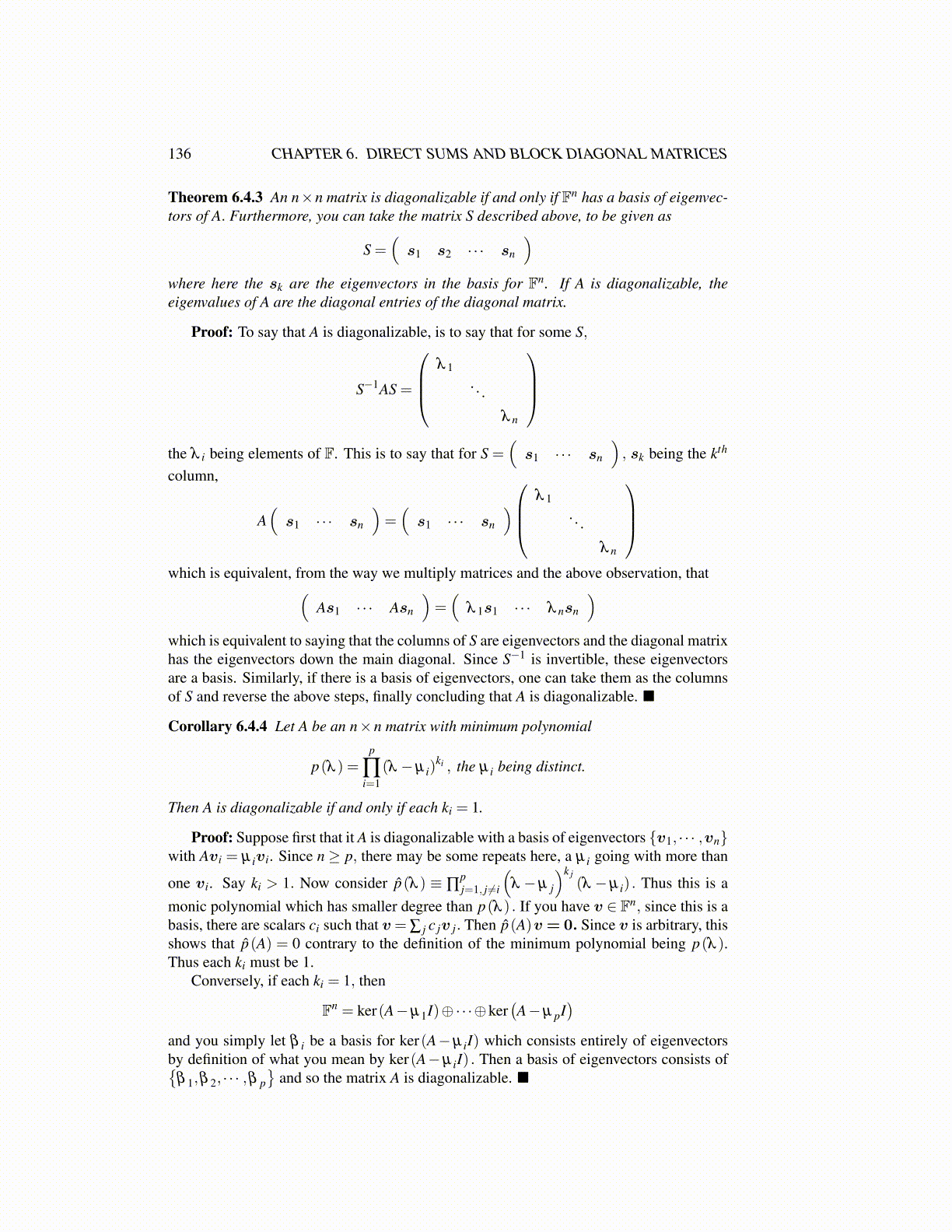
136 CHAPTER 6. DIRECT SUMS AND BLOCK DIAGONAL MATRICES
Theorem 6.4.3 An n×n matrix is diagonalizable if and only if Fn has a basis of eigenvec-tors of A. Furthermore, you can take the matrix S described above, to be given as
S =(
s1 s2 · · · sn
)where here the sk are the eigenvectors in the basis for Fn. If A is diagonalizable, theeigenvalues of A are the diagonal entries of the diagonal matrix.
Proof: To say that A is diagonalizable, is to say that for some S,
S−1AS =
λ 1
. . .
λ n
the λ i being elements of F. This is to say that for S =
(s1 · · · sn
), sk being the kth
column,
A(
s1 · · · sn
)=(
s1 · · · sn
)λ 1
. . .
λ n
which is equivalent, from the way we multiply matrices and the above observation, that(
As1 · · · Asn
)=(
λ 1s1 · · · λ nsn
)which is equivalent to saying that the columns of S are eigenvectors and the diagonal matrixhas the eigenvectors down the main diagonal. Since S−1 is invertible, these eigenvectorsare a basis. Similarly, if there is a basis of eigenvectors, one can take them as the columnsof S and reverse the above steps, finally concluding that A is diagonalizable. ■
Corollary 6.4.4 Let A be an n×n matrix with minimum polynomial
p(λ ) =p
∏i=1
(λ −µ i)ki , the µ i being distinct.
Then A is diagonalizable if and only if each ki = 1.
Proof: Suppose first that it A is diagonalizable with a basis of eigenvectors {v1, · · · ,vn}with Avi = µ ivi. Since n≥ p, there may be some repeats here, a µ i going with more than
one vi. Say ki > 1. Now consider p̂(λ ) ≡ ∏pj=1, j ̸=i
(λ −µ j
)k j(λ −µ i) . Thus this is a
monic polynomial which has smaller degree than p(λ ) . If you have v ∈ Fn, since this is abasis, there are scalars ci such that v = ∑ j c jv j. Then p̂(A)v = 0. Since v is arbitrary, thisshows that p̂(A) = 0 contrary to the definition of the minimum polynomial being p(λ ).Thus each ki must be 1.
Conversely, if each ki = 1, then
Fn = ker(A−µ1I)⊕·· ·⊕ker(A−µ pI
)and you simply let β i be a basis for ker(A−µ iI) which consists entirely of eigenvectorsby definition of what you mean by ker(A−µ iI) . Then a basis of eigenvectors consists of{
β 1,β 2, · · · ,β p}
and so the matrix A is diagonalizable. ■